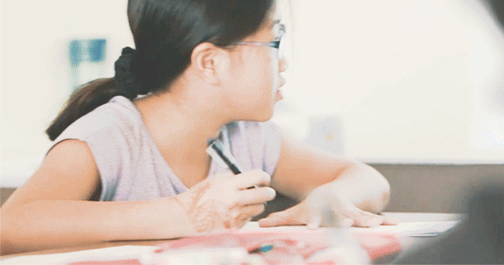
Contributed by Joyce Simpson, Ang Swee Lian and Dawn Zeng, Subject Heads of English, Math and Science at The Learning Lab, Rochester Mall.
Now that SA1 examination papers have been graded and the scripts have been returned, it is time to identify areas for improvement. While exam results are a snapshot of your child's achievements, it is important to remind your child that learning continues to take place beyond the exams.
Here are 5 essential things our teachers would like you to know as you support your child’s plans for progress and improvement.
1. Help Your Child to Learn from Past Mistakes
At The Learning Lab, we teach our students to think deeply about learning. This includes reflecting on why mistakes were made during the exams and getting your child to trace his or her thought process.
Set aside time to look through the exam papers together with your child to help him or her identify specific challenges that may have arisen during the English, Mathematics and Science papers. Our subject heads from TLL Rochester suggest some subject-specific exam review questions below.
FOR ENGLISH
Question: Did your child make a careless grammar, spelling or punctuation error?
Joyce's advice for your child: Such errors can be avoided with meticulous checking. Avoid transference errors and retain key details when answering Synthesis & Transformation (S&T) questions. Seek to understand the grammar rule and practise similar questions.
FOR MATH
Question: Did your child face difficulties in any topics or heuristics?
Swee Lian's advice for your child: Practise questions and apply heuristics on these topics to clear any doubt as soon as possible. Encourage your child to think aloud by asking him or her to explain the reasoning behind each step. Remember to take note of common errors made.
FOR SCIENCE
Question: Which section did you lose the most marks in?
Dawn's advice for your child: For Section A: Multiple Choice Question (MCQ), use the elimination technique or check if the answers are transferred correctly onto the OAS. For Section B: Free Response Questions (FRQ), check if necessary keywords have been used and check for phrasing errors.
To help ensure that your child is on the right track, we have put together a simple and useful Post-SA1 checklist for you and your child. Click here or the link below to download our checklist for your child!
2. Motivate Your Child to Keep Improving
Sometimes, parents inevitably compare their child to others in order to motivate them to achieve a new personal best.
Research has shown that competition can be a driving force towards better performance but comparison can be counterproductive as it may lead to lower self-esteem. Instead of comparing your child to others, you may like to set specific goals for him or her, based on current performance.
In order to motivate your child, it is important for you to encourage a positive attitude towards learning and improving. As a parent, you can encourage your child by:
celebrating any improvement (big or small) that your child has made
acknowledging the effort that your child has put in, no matter how he or she has performed in relation to your expectations
Joyce Koor, Subject Head for English at The Learning Lab, Rochester Mall, adds, "A compliment that acknowledges your child's effort goes a long way in helping him or her develop self-awareness to reach his or her personal best. When you acknowledge the improvement that your child has made, it motivates him or her to continue seeking progress in his or her work and it also builds confidence."
For example, a two-mark improvement should not go unnoticed. You may encourage your child by saying, “I see that you have gained two more marks in your comprehension section as compared with the previous test — good effort! Now, let’s try to secure two more marks for the next paper by checking the answers carefully to avoid careless errors.”
3. Review Your Child's Revision Plan

Understanding how your child revises his or her work can help you better understand what more can be done during the preparation process.
You can start by reviewing your child's revision plan — is there a particular method that works well for him or her? Are there tweaks to be made to improve the learning process?
| Questions About Your Child's Revision | What Your Child's Answer May Reveal |
| How many hours did you spend revising for the exam? | If your child has not spent enough time preparing for the exam, you may realise that last-minute cramming is unlikely to prepare your child for the examinations. Suggest beginning the revision process a little earlier for your child when he or she prepares for the next exam. |
| How many times did you review this material? | If your child has not spent enough time reviewing the material, frequent, low-stakes testing can improve long-term retention and future application of knowledge. |
Related Article: 8 Study Tips Every Student Needs To Know
4. Help Your Child Check Through Each Paper Thoroughly
It is common to hear children say that they have checked their work. In reality, many of them are not sure of what they should look out for. They are probably content with just checking to ensure that all the questions have been completed, rather than ensuring that each answer is accurate or precise.
Here are 7 pointers on what your child should look out for after he or she has completed his or her paper during the exam:
For All Subject Papers
1. Check that you have completed all questions.
For English
2. Check that there are no transference errors for S&T questions.
3. Check that you have included a full stop at the end of each sentence, and commas in long sentences.
For Mathematics
4. Check that you have included units in your final answers.
5. Check for transference error. Read your numbers clearly and carefully, especially for repeated numbers like 144 and 114.
For Science
6. Check that you have used the correct theories and/or keywords to answer the questions.
7. Check that you have read the question requirements carefully to reduce any misinterpretations of questions.
5. Encourage Your Child to Attempt the Exam Papers (Again)

After you have reviewed all the mistakes with your child, you can encourage him or her to give the paper a second attempt.
Dawn Zeng, Subject Head of Science at The Learning Lab, Rochester Mall, shares, "By reviewing your child's mistakes, it ensures that your child understood the mistakes that were made. [This is better than] just copying the corrected answers blindly from his or her teachers without fully understanding what went wrong.
By redoing the paper, your child should also be more aware of the steps that should be taken to prevent such mistakes from happening again.
Additionally, your child will gain more confidence knowing that he or she has learnt from his or her mistakes and that he or she has the necessary knowledge and skills to tackle similar questions in future."
Set Your Child On Track for Semester 2 and Beyond
Give your child more guidance to ensure he or she is on the right track for the rest of the year.
The Learning Lab is now available at locations.
If you have any enquiries about our programmes, please email us at enquiry@thelearninglab.com.sg or call us at 6733 8711 and we will be happy to assist you.


